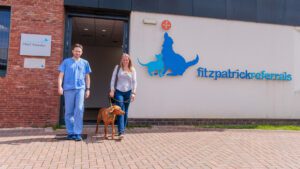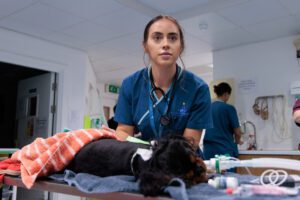Objective
To establish whether osteochondral autograft transfer (OAT) procedures for osteochondritis dissecans (OCD) of the canine elbow would restore articular contour, resurface osteochondral defects with hyaline cartilage, and resolve lameness in the short term
Study design
Case series
Animals
Dogs (n=27) with medial humeral condylar OCD
Methods
After arthroscopic assessment, the medial humeral condyle was exposed by arthrotomy. Medial coronoid disease (MCD) was managed by subtotal coronoid ostectomy, then the OCD lesion debrided and OATS instrumentation used for resurfacing the defect with osteochondral core grafts collected from the stifle. Recipient sockets were created to maximally resurface OCD lesions. Six elbows also had proximal ulnar osteotomy. Outcomes measures included subjective clinical, radiographic, and arthroscopic examination at 12-18 weeks.
Results
Of 33 treated elbows, 30 also had MCD. Accurate reconstruction of the medial humeral condylar surface was achieved in all joints. Lameness resolved in 3-13 weeks in 26 of 31 limbs with follow-up. Arthroscopic outcomes for elbows with concomitant MCD but without proximal ulnar osteotomy were variable (14/24 good, 5/24 intermediate, 5/24 poor). Short-term outcome for OCD without MCD (n=2) and when proximal ulnar osteotomy (n=5) was performed were positive. Long-term assessments of 7 dogs suggested minimal donor site morbidity.
Conclusion
OAT procedures are technically feasible in the canine elbow. In elbows with concurrent MCD, proximal ulnar osteotomy may improve likelihood of positive clinical outcome.
Clinical relevance
OAT procedures warrant further evaluation as a treatment option for selected cases of OCD involving the canine medial humeral condyle.



